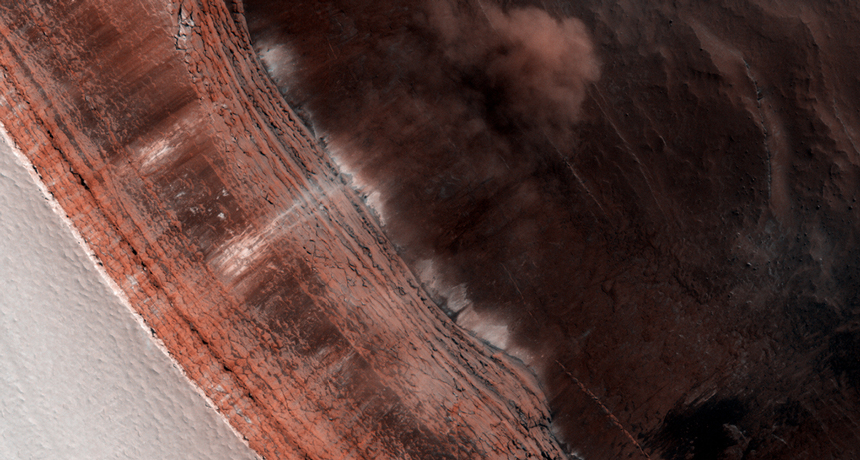Shallow ice sheets discovered on Mars could aid future astronauts
Exposed ice on steep slopes can also help reveal the Red Planet’s climate history

LOOK OUT BELOW Erosion is revealing vast ice deposits in cliffs on Mars. The ice (white streaks in this image from NASA’s Mars Reconnaissance Orbiter) is buried under just a meter or two of soil, meaning it could be relatively easy to access on future missions.
Univ. of Arizona, JPL/NASA